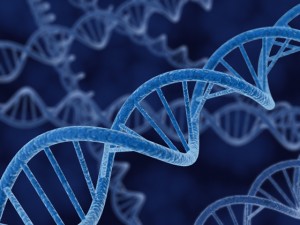Recently, I completed my PhD studies in the EDIT lab, wrote my thesis, and retired to a life of luxury and leisure (or two of those three). Across the past four years I have become interested in how now-standard methods in genomics (the study of genetics across the genome) can be used to ask age-old questions about how our genetic code and life experiences influence our behaviour. Here I describe our work investigating associations between genetic variation and better response to cognitive behavioural therapy.

Cognitive behavioural therapy (CBT) is a form of psychological therapy that has become popular for helping people experiencing distressing mental conditions. Following a recent large investment in training providers of CBT (the Increasing Access to Psychological Therapies initiative), CBT has become one of the front-line treatments for anxiety disorders and depression in the UK (find out more here).
“Finding biological associations with response to CBT could help people identify which treatment is best for them.”
We are interested in trying to identify changes in the human genetic code that correlate with better response to CBT. Finding biological associations with response to CBT could help people identify which treatment is best for them. This is important – about 25-30% of us will suffer from anxiety or depression in our lifetimes, and CBT is one of the first treatment types offered (Steel et al, 2014). It is generally effective (in that most people who receive it get better), but has a reasonably high failure rate – about 40% of people who receive CBT don’t get significantly better as a result (James et al, 2015). If we can identify biological markers of good or bad response to CBT, these could be combined with known clinical markers (such as the relationship between the treated individual and their therapist) to assist treatment choice. As similar efforts in studying drug-based therapy also advance, the value of this information will steadily increase.
In addition to this practical application, studying response to CBT allows us to test a hypothesis about how genes influence our response to our environment. Traditionally, the effect of genetic variation has been thought of only in terms of risk – your DNA might make you more affected than others by bad events. However, it could be the case that your DNA might make you more affected by all events, both positive and negative. Testing this idea (“differential susceptibility”) requires the study of positive environments, and CBT is one such environment (Belsky and Pluess, 2009).
“Traditionally, the effect of genetic variation has been thought of only in terms of risk – your DNA might make you more affected than others by bad events. However, it could be the case that your DNA might make you more affected by all events, both positive and negative.”
To examine the biological correlates of response to CBT, Thalia [Eley, EDIT Lab director] established the Genes for Treatment study – an international collaboration aimed at identifying predictors (particularly genetic variants) of response to CBT in children with anxiety disorders (Hudson et al, 2015). Previous searches for genetic predictors had been undertaken before, including by our group. The evidence for any particular variant was not particularly strong, though, because such studies had been restricted to studying relatively few people, and had tended to focus on only a few variants. To combat this, we sought to examine the effects of variants from across the genome, and were able to recruit just under a thousand children to study (Coleman et al, 2016a).
While a considerable undertaking (and the biggest study of its type to date), our study was still rather small compared to most genomic studies. We cast considerable doubt on the existence of a single, common variant with a large association with treatment response; but were not able to identify any particular variants with smaller effects. Although slightly disappointing, this wasn’t unexpected – the gold-standard genomic studies in psychiatry thus far suggest these complex human traits are influenced by thousands of common variants, each having a tiny individual effect. While our study did not identify any variants, it represents the first step in a much larger effort – watch this space!

Watch this space! We expect that future studies, using genetic samples from even more people, could detect thousands of common genetic variants associated with complex human traits.
Having established that the effect of individual common variants was likely to be small, and that a study with enough participants to identify such variants would need several years of collaboration and recruitment to set-up, I changed tack slightly. Variants in the genetic code must have their effect either through altering the way in which the DNA encodes RNA (which is then translated into proteins), or through altering the RNA itself (and thus altering the proteins). As such, examining variants in the genetic code and the amount of RNA expressed in cells might be informative about any link between biology and treatment response.
Our child study had not examined RNA, but we had access to a second study of CBT for anxiety in adults that had both DNA and RNA. Accordingly, I examined baseline RNA levels and variation in the DNA, and sought effects of the two independently and together, as well as using additional methods that grouped similar RNA expression levels together (Coleman et al 2016b). Again, I couldn’t identify a single variant, RNA, or variant-RNA relationship strongly linked to treatment response. Treatment response is itself a complex phenomenon, and that complexity seems to be mirrored in the absence of strong effects from single biological markers
We remain some way off the goal of helping inform people undergoing CBT – but science is a gradual process, and these first steps allow us to refine our next studies, and continue to obtain the evidence necessary to provide information that could one day help thousands, if not millions, of people.
References:
-Steel Z, Marnane C, Iranpour C, et al. The global prevalence of common mental disorders: a systematic review and meta-analysis 1980–2013. International Journal of Epidemiology. 2014;43(2):476-493. doi:10.1093/ije/dyu038
, , , , . Cognitive behavioural therapy for anxiety disorders in children and adolescents. Cochrane Database of Systematic Reviews 2015, Issue 2. Art. No.: CD004690. doi: 10.1002/14651858.CD004690.pub4.
-Belsky J, Pluess M. Beyond diathesis stress: differential susceptibility to environmental influences. Psychological bulletin. 2009;135(6):885. doi:10.1037/a0017376
-Hudson JL, Keers R, Roberts S, et al. Clinical predictors of response to cognitive-behavioral therapy in pediatric anxiety disorders: the Genes for Treatment (GxT) study. Journal of the American Academy of Child & Adolescent Psychiatry. 2015;54(6):454-63. doi:10.1016/j.jaac.2015.03.018
-Coleman JRI, Lester KJ, Keers R, et al. Genome-wide association study of response to cognitive–behavioural therapy in children with anxiety disorders. 10.1080/15622975.2016.1208841

[…] led me to the studies that form the second half of my thesis (which, for those who missed the first exciting instalment is concerned with using the whole genome to study how genes and the environment influence our […]